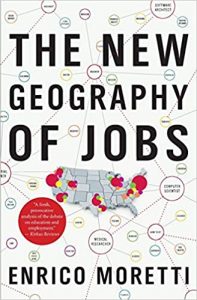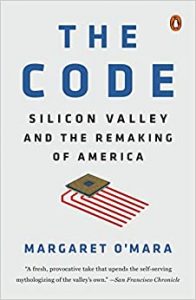The Age of Fracture by Daniel Rodgers was strongly recommended by one of my followees, Paul Nightingale, on Twitter and he made it sound like just my cup of tea. Which it is. It’s an intellectual history of late 20th century America, and the way the public sphere of ideas transitioned from a focus on institutions and social relations to an individualist perspective. This was most apparent in economics, which is where the book starts, but spread across many domains of policy and research – the book has chapters on race, class, gender, as well as politics in general. The hinge was the late 1970s/early 1980s, just about the time I spent four years living in the US, so reading this brought back many memories of that first Reagan term, the rise to prominence of Newt Gingrich, and the ‘declinist’ bestsellers published a few years later, Bloom’s Closing of the American Mind, Lasch’s Culture of Narcissism.
Age of Fracture is beautifully written, and I was particularly impressed by its scope – the breadth of knowledge of so many different domains is amazing. In the chapter (‘The Rise of the Market’) on the rise of abstract rational expectations economics, divorced from time, place and relationships, Rodgers gives a masterly summary of the evolution of the discipline. “The new intellectual movements in economics pushed to its limits the extent to which society could be analytically dissolved altogether into its individual utility-maximising parts.” As the chapter points out, the victory of this approach was never total, and by the end of the 1990s was moving on to a new focus on institutions, transactions costs, behaviour and networks. Nevertheless, individualism became the leitmotif of the public realm of ideas – and on the British side of the Atlantic too.
The transatlantic traffic was not all one way. The chapters on race and particularly gender emphasise the role of French post-structuralism, which swept over cultural studies and much of the humanities, and still seems to be destroying those departments. In paving the way for a sense of identity as something self-determined, it created a libertarianism of the left alongside the market libertarianism of the right. In both cases, Rodgers writes, “The libertarian vision of society was radically timeless.” Voluntary identities, voluntary transactions, are disembodied from actual history. Whether rational expectations economics or the originalist perspective on the US constitution, time – future or past – is instantly accessible. Both featured the desire to “locate a trap door through which one could reach beyond history and find a simpler place outside of it.”
The book is wisely silent on whether the climate of ideas is changing now, amid the storms of pandemic, authoritarianism rising in the US and elsewhere, social fracture. It reminded me of this comment in Elinor Ostrom’s Nobel lecture (flagged up on Twitter recently by Nicholas Gruen): “Designing institutions to force (or nudge) entirely self-interested individuals to achieve better outcomes has been the major goal posited by policy analysts for governments to accomplish for much of the past half century. Extensive empirical research leads me to argue that instead a core goal of public policy should be to facilitate the development of institutions that bring out the best in humans.”
Quite. But fracturing is easier than building. ‘Building back better’ is harder still.






